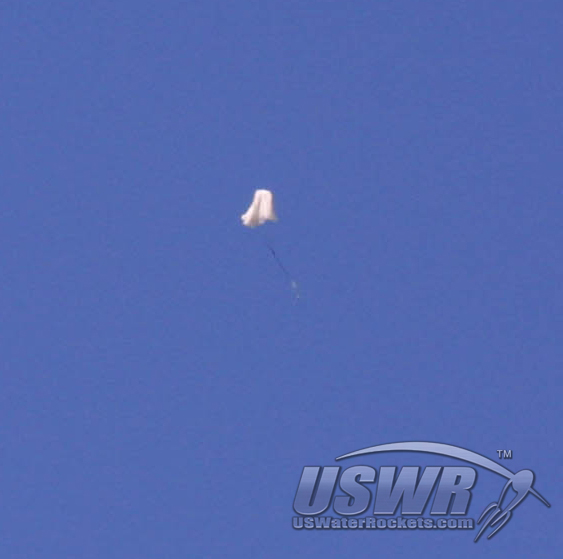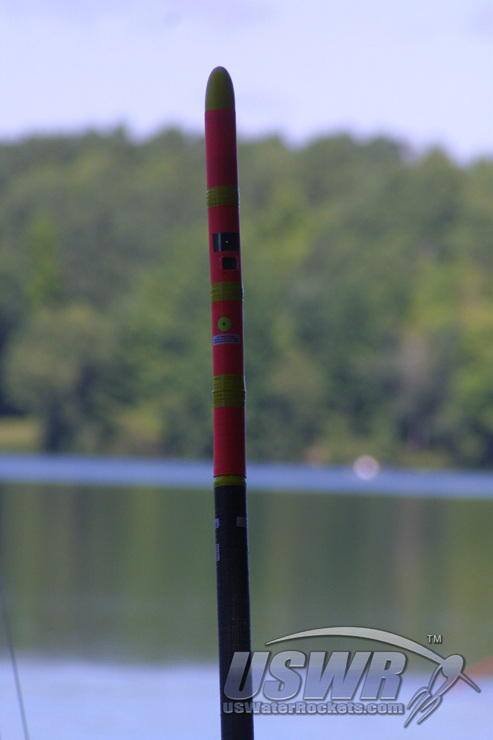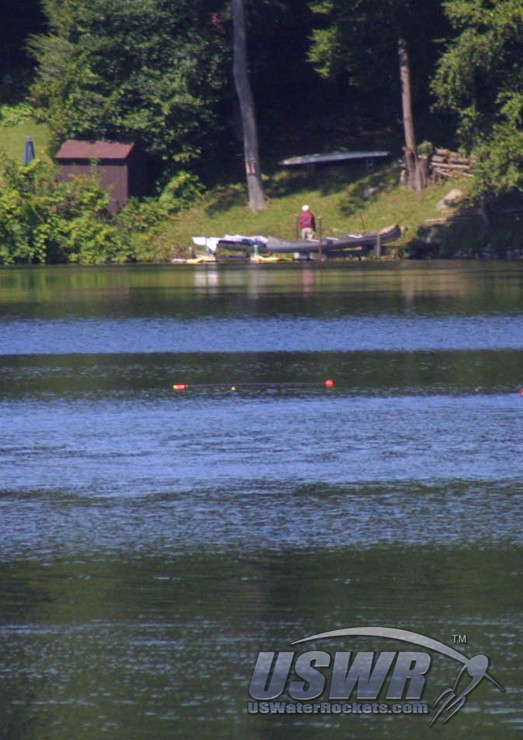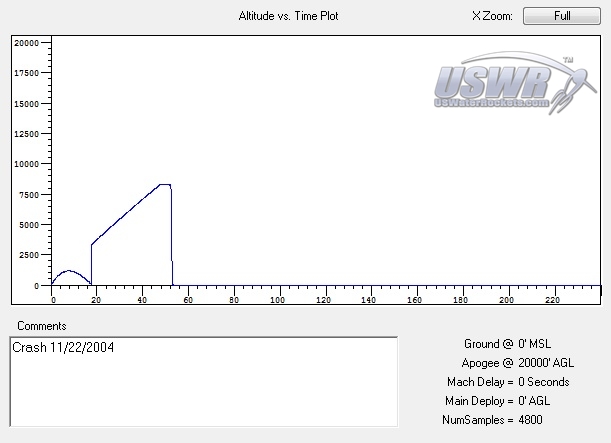X-10 Water Rocket crashes during attempt to set new world altitude record.
August 22, 2004 - Investigators probe the cause of a Water Rocket crash which resulted in the total loss of a video camera and altimeter earlier today during a shakedown flight of a Water Rocket designed to set the World Record for Altitude.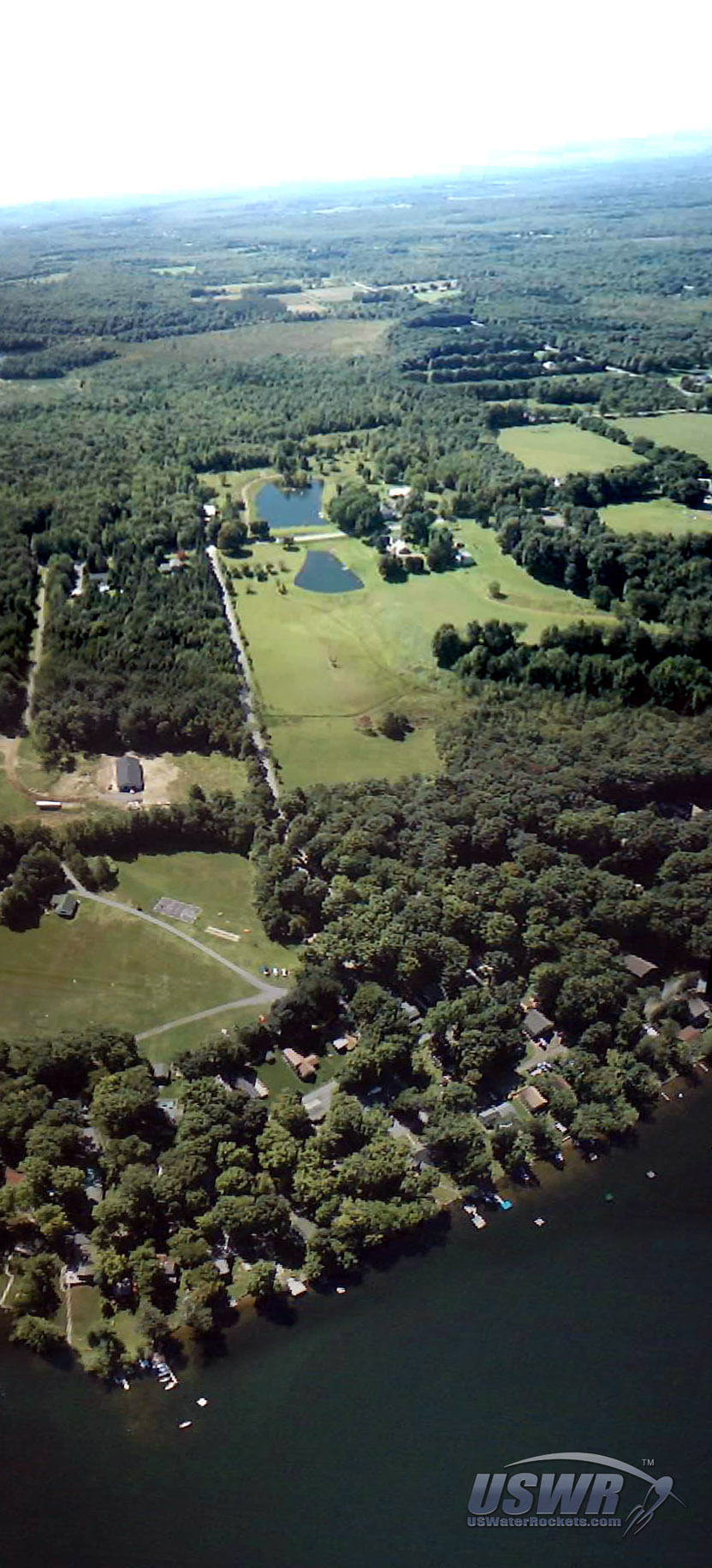
Eyewitness accounts report that the launch went perfectly, but when the rocket went through apogee it deployed a parachute which somehow separated from the rocket. There was a great deal of confusion because the ground crew could not see the rocket clearly because it was nearly 1,200 feet up, and it was assumed that the parachute had pulled the payload/electronics bay off the pressure vessel. It was not until the parachute had descended low enough to be clearly seen that it became apparent that the parachute had simply tore free of the rocket entirely. The pressure vessel, complete with payload and electronics, had fallen to Earth without the parachute.
Ironically, this was the maiden flight for a newly constructed payload/electronics bay, which was designed with a backup parachute system which was to activate in the event of a main parachute failure. The backup system made no apparent signs of functioning, even though the flight computer reported that it was triggered
The rocket impacted the surface of a the lake used for water recovery, and the electronics/payload section was totally destroyed. Only a backup system designed to float the electronics and payload saved these vital systems from ending up in Davey Jones' locker. The altimeter and camera electronics were both damaged beyond repair in the accident, but the Engineers at U.S. Water Rockets were able to successfully remove the data recorded in the memory chips and gain valuable insight into the accident
The leading theory regarding the cause of the accident is that the parachute deployed at apogee but was tangled or stuck and failed to fill with air for some period of time. When the parachute finally opened, the rocket had fallen far enough to have gained significant speed. The lightweight materials in the parachute system were unable to cope with the sudden shock and simply sheared off. It was determined that the newly devised backup parachute was unable to deploy because the aerodynamic pressure pushing against the nose of the rocket as it fell faster and faster had become too strong for the system to push off the nose.
Even though the impact was a setback, we intend to improve the system and rebuild for a future attempt at the record. We were very encouraged to learn that the impact had caused absolutely no damage at all to the main fuselage of the rocket. Plans are to have a revised system ready to test within two weeks.









